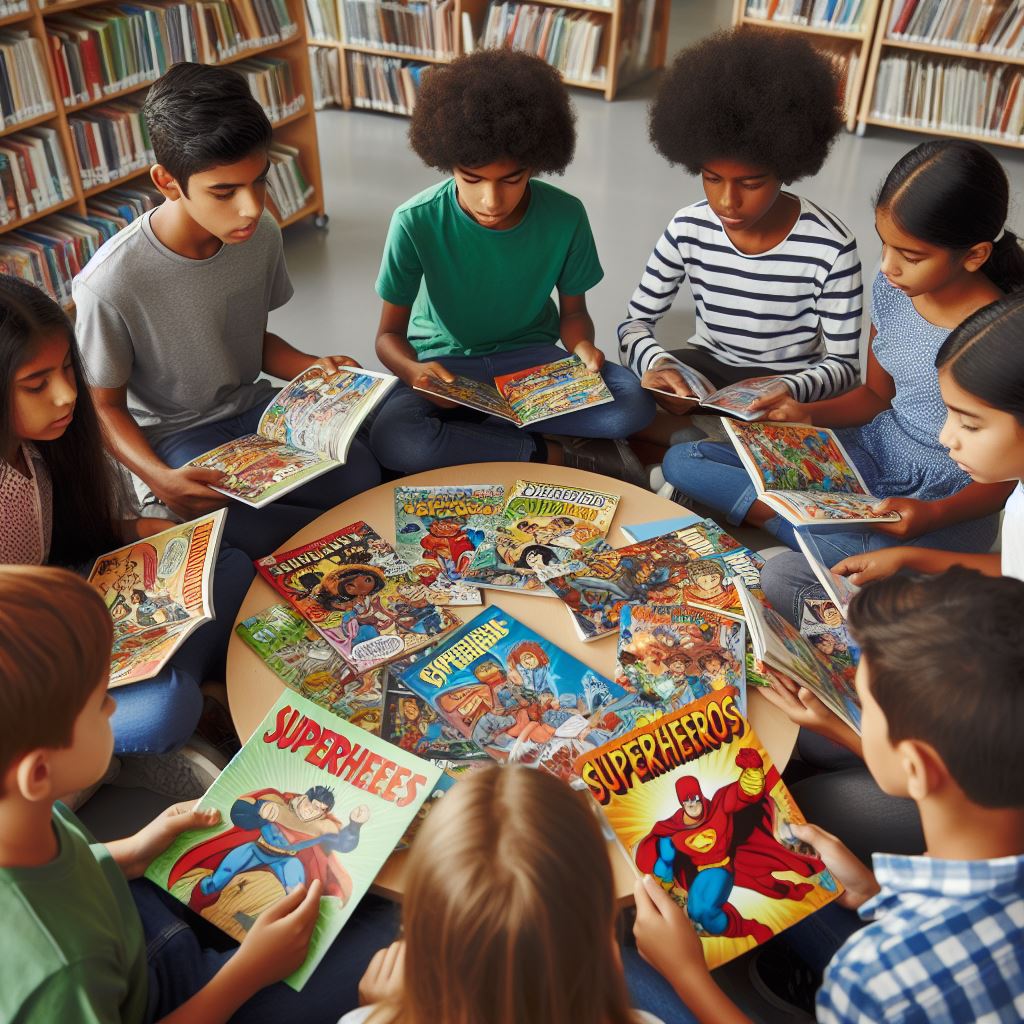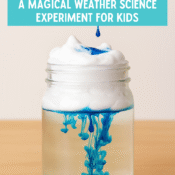
Are Modern Comic Books No Longer Just for Boys
You love comic books. Ever since you were little, you’ve looked forward to the latest adventures of your favourite superheroes. But somewhere along the way, you picked up the idea that comics are just for boys. Well, think again! Modern comic books have come a long way. They engage readers of all genders with amazing storytelling. So don’t make assumptions. There’s a whole colourful comics world waiting for you to explore.
The Evolving World of Comic Books
Comic books have come a long way from the stereotypical superhero stories of the past. Modern comics represent diverse genres, audiences, and creators. So even kids activity blogs can feature in comic book stories in modern era. They offer kids of all backgrounds an imaginative escape and gateway to reading.
Diverse Genres
Comics span genres from romance to mystery to sci-fi. Manga (Japanese-style comics) and graphic novels (book-length comics) have introduced new styles and stories. There’s something for every interest.
Widespread Appeal
Comics are for everyone. Many feature strong, complex female characters like Ms. Marvel, Wonder Woman, and Spider-Gwen. Creators champion inclusivity, with characters from all walks of life.
New Voices
The comics industry has traditionally lacked diversity but is making progress. Creators from marginalised groups are sharing their voices and experiences. Kids can find characters like themselves and discover new perspectives.
Visual Literacy
Comics teach visual literacy, a crucial skill for the 21st century. Readers learn to interpret images, colour, layout, and more. They gain a deeper understanding of visual storytelling techniques used in media, advertising, and technology.
Entertainment and Fun
Most importantly, comics are fun. They spark imagination, adventure, and wonder in readers of all ages. Kids who enjoy comics develop an early love of reading and learning.
Comic books have evolved to capture the diversity of human experiences. They bring kids joy, inspiration, representation, and new ways of understanding the world. Though once aimed at boys, comics now have something for every child. They remain a timeless medium for learning, creativity, and adventure.
Why Comic Books Benefit Modern Kids
Modern comic books offer so much for children today. They help develop literacy and reading comprehension in an engaging way.
Building Reading Skills
Comic books teach kids visual literacy by showing how to interpret images to follow a story. They also expand vocabulary as children encounter new words in fantastical contexts. The combination of vivid visuals and text sparks the imagination and brings stories to life.
Developing Creativity
Comics transport kids to imaginative worlds filled with super-powered heroes, magical creatures, and futuristic technology. They learn to visualise stories beyond what’s on the page. This helps flex creative muscles that will serve them well in life.
More way in developing kids creativity : https://kids-activities.net/unlocking-the-power-of-secret-code-writing-enhancing-childrens-cognitive-development/
Learning Empathy
Many comics explore complex human emotions and relationships. Kids gain insights into behaviours and experiences different from their own. They learn empathy by understanding characters’ motivations, struggles, and moral dilemmas.
Promoting Inclusivity
Modern comics champion diversity and representation. Children see themselves reflected in comics and discover new perspectives. This fosters a spirit of inclusiveness and challenges prejudices.
Enhancing Critical Thinking
Comics require kids to analyse stories, interpret plot twists, and understand characters’ hidden motivations. This strengthens critical thinking skills that translate across all areas of life.
Providing Entertainment
Most importantly, comics are fun. They spark joy in reading and capture children’s imagination. Kids eagerly follow the adventures of their favourite characters and can’t wait to read the next issue. This makes comics an ideal tool for creating lifelong readers.
Comic books benefit all children with their combination of entertainment, education, and inclusiveness. They deserve a place in every child’s reading life.
Developing Literacy and Reading Skills
Comic books are highly effective at helping children develop strong literacy and reading skills. The combination of visuals and text in comics engages readers and aids comprehension. Kids have to interpret the relationship between words and images to fully understand the story. This builds visual literacy, an increasingly important skill.
Improving Vocabulary and Reading Fluency
Comics expose children to new words through compelling stories and characters. Because kids actively want to know what happens next, they are motivated to figure out the meaning of unfamiliar words from context clues. Comics also help improve reading fluency since kids re-read their favourite stories and dialogue.
Fostering a Love of Reading
Comics make reading fun, which encourages kids to pick up books more often. They provide entertainment and adventure, inspiring a lifelong love of reading in children. Reluctant readers, especially, may find comics more engaging than traditional books without pictures. Comics are also collectible, giving kids an incentive to keep reading to follow their favourite characters and series.
Developing Comprehension
Understanding comics requires synthesising visual and textual information. Kids have to infer meaning that isn’t explicitly stated in either the images or words. They learn to analyse characters’ facial expressions, gestures, and interactions to fully grasp the story. All of these skills strengthen reading comprehension and critical thinking.
While comics are often thought of as “light” reading, they play an important role in developing literacy. They teach children to interpret both visual and written language, build vocabulary, improve reading fluency and comprehension, and cultivate a passion for reading. Comics show that reading can be an exciting adventure, not just a chore. For kids today, visual literacy and the ability to understand complex, multimodal texts are essential skills, and comics help lay the groundwork for these abilities.
Sparking Creativity and Imagination
Comic books ignite creativity in kids by transporting them to imaginative worlds filled with exciting characters and scenarios. As children read, they visualise the settings, characters, and events in their minds. This process strengthens imagination and the ability to conceive of ideas beyond the limits of everyday reality.
Fantastical Worlds
Comic books are set in imaginative worlds, from the futuristic Metropolis of Superman to the magical land of Asgard, home of Thor. Kids imagine what it’s like to live in these places, developing a sense of wonder and adventure.
Memorable Characters
Comic books feature unforgettable characters with amazing powers and abilities. As children follow the adventures of their favourite superheroes like Black Widow or Squirrel Girl, they put themselves in the shoes of these characters. This fuels imagination and creative thinking.
Engaging Scenarios
The action-packed scenarios in comic books excite kids and spark curiosity. As children read about epic showdowns between heroes and villains or intergalactic space battles, they visualise these events in their mind’s eye. This process stokes creativity by exposing children to scenarios beyond the ordinary.
Comic books have enduring power to inspire imagination in kids of all genders. While comics were once dismissed as frivolous entertainment for boys, they are now recognised as a valuable storytelling medium for children. Modern comics in particular feature diverse characters, worlds and scenarios that speak to a wide audience. By transporting kids to imaginative realms and unforgettable adventures, comic books spark creativity and fuel a sense of wonder.
Teaching Emotional Intelligence
Comic books explore the emotional lives of characters and the relationships between them. ###Children learn empathy and gain insight into human behaviour by following the moral dilemmas and interpersonal struggles of their favourite characters.
For example, superheroes like Spider-Man and the X-Men deal with relatable issues like isolation, loss, and identity. Manga series focus on relationships, friendships, and the challenges of growing up. Even funny animals in comics aimed at younger kids experience emotions like jealousy, fear, and joy that children can understand.
Seeing how characters work through difficult emotions and treat each other with compassion helps kids develop emotional intelligence. They learn that it’s normal to feel angry, sad or confused at times. But they also see how to cope in a constructive way and to show kindness towards others.
Use comics as an accessible way to to develop the child’s thinking
Comics are also an accessible way for children to start thinking about ethics and moral reasoning. For instance, a story might show how a hero decides whether the ends justify the means in defeating a villain. Or it could explore the consequences of a good intention gone wrong.
Discussing these kinds of complex themes with kids as they read helps strengthen their empathy and critical thinking skills. Parents and teachers can ask thought-provoking questions about characters’ motivations and choices to encourage reflection.
Some comics do reinforce stereotypical gender roles, but the industry has evolved a lot. Modern stories frequently feature strong, well-rounded female characters and more diversity. This helps combat outdated notions of how people should think, feel and behave based on their gender or background.
In an increasingly polarised world, the emotional intelligence and moral reasoning that comics can develop are invaluable. By reflecting on both positive and negative ways of handling emotions, kids build understanding and learn to value compassion.
Promoting Inclusivity and Representation
Comic books today actively challenge stereotypes and promote inclusivity. Creators work to showcase diverse characters, experiences and perspectives to represent readers of all backgrounds.
Diverse Characters and Stories
Modern comics feature a variety of strong, complex female characters, characters of colour, LGBTQ characters and more. For example, the new Amethyst: Princess of Gemworld series follows a black teen princess. The manga genre also appeals to many readers with its expansive range of stories.
Challenging Stereotypes
Comics are breaking down outdated stereotypes about who enjoys them. The misconception that comic books are “only for boys” is false and alienates readers. Many comics today defy gender stereotypes in imaginative ways. Lumberjanes, for example, features a group of teenage girl scouts going on fantastical adventures at a summer camp.
Behind the Scenes
The comic book industry itself is becoming more inclusive and diverse. More female creators, creators of colour, and LGBTQ creators are sharing their voices. Artists like Tillie Walden, creator of the Eisner award-winning graphic memoir Spinning, are inspiring readers. Diversity behind the scenes leads to more authentic diverse representation on the page.
While comics still have progress to make, the medium is evolving to actively promote inclusivity and celebrate readers of all backgrounds. When kids can see themselves reflected in the stories they read, it fosters a lifelong love of reading. Modern comics showcase that there’s a comic out there for every reader.
Building Visual Literacy
Comics are a visual medium, so reading them helps children develop visual literacy—the ability to interpret, comprehend and analyse visual information. In today’s highly visual world, this is an invaluable skill.
Understanding Layouts and Design
The way images are arranged on the page, including elements like panels, gutters, speech bubbles and captions, conveys meaning. Kids learn how different layouts impact the flow and pacing of a story. They can see how design choices create mood and tone.
Interpreting Facial Expressions and Body Language
Comics rely heavily on character’s expressions and gestures to show their emotions and reactions. Children become adept at deciphering subtle cues to understand what characters are thinking or feeling. These skills translate to better comprehending visual media and even social interactions in real life.
Following the Action
Comics teach kids how to follow action sequences and interpret movement. Their eyes learn to flow from panel to panel, motion line to motion line, stitching together fluid action and understanding the progression. This enhances visual scanning abilities and the capacity to understand relationships between images.
Reading Between the Panels
Comics often imply as much as they show directly. Kids learn to infer what happens in the gaps between panels using clues like characters’ expressions, word balloons and the overall context. They gain experience with visual subtext and picking up on subtle hints, all while exercising their imagination.
Appreciating Artistry
Comics expose kids to a variety of artistic styles. They learn to evaluate elements like line work, colouring, character design, and level of visual detail. Developing an appreciation for the art form cultivates visual sensibilities that translate broadly to all areas of visual culture.
While comics are an entertaining medium, they also provide valuable education in visual literacy and visual thinking skills that are increasingly important in the 21st century. These skills serve children well as they navigate an image-saturated world.
Enhancing Critical Thinking
Comic books challenge kids to think critically about what they’re reading. With twisty plots, complex characters, and layers of meaning, there’s more than meets the eye.
As your child reads, encourage them to question what’s happening in the story. Why did a character make that choice? What might happen next? How did the ending surprise you? Posing open-ended questions sparks discussion and helps kids gain new insights into the tale.
Hidden details and references also enhance critical thinking. Many comics contain allusions to other stories or drop hints about future plot points. Ask your child if they noticed any subtle clues or what they might mean. Analysing these breadcrumbs strengthens interpretation and logic skills.
Themes explore thought-provoking issues that inspire reflection. Talk to your child about the ideas, values and deeper messages in the comic. How did it make them feel? What did they take away from the story? Discussing themes helps kids develop empathy and form their own opinions.
Visuals provide context clues that require analytical thinking to decipher. The art conveys emotions, relationships, and events that aren’t explicitly stated in the text. Challenge your child to interpret what’s happening in the illustrations. How do the images enrich the story? What details stand out? Understanding visual storytelling is a crucial skill.
While entertaining, comic books also make kids smarter by promoting an inquisitive mindset. With your guidance and support, a comic that seemed simple on the surface can become an opportunity for learning and growth. Critical thinking is a habit that will benefit your child for life.
FAQs: Are Comic Books Only for Boys?
The stereotype that comic books are exclusively for boys is outdated and inaccurate. Here’s why:
Diverse Audience
Comics appeal to all genders, ages, and backgrounds. Girls and non-binary children enjoy superhero stories, graphic novels, and manga. People from all walks of life immerse themselves in the comic book world.
Strong Female Characters
Modern comics feature powerful female protagonists, like Wonder Woman, Ms. Marvel, and Spider-Gwen. These characters prove that comics are not just for boys.
Varied Genres
Comics cover a wide range of genres: adventure, mystery, fantasy, romance, and more. There are comics for every interest, so everyone can find something they love.
Breaking Stereotypes
Creators actively challenge gender stereotypes. Comics showcase diverse identities and perspectives. They feature characters of colour, LGBTQ characters, and characters with disabilities.
Girls in Comics
Many girls read and create comics. Female artists, writers, and fans have contributed greatly to the comic book industry. Several popular comics have female creators and protagonists, demonstrating that comics are for girls too.
In conclusion, the notion that comic books only appeal to boys is an outdated myth. Comics are beloved by people of all genders, and the industry has taken great strides to challenge stereotypes and increase diversity and inclusiveness. Modern comics offer role models and stories for everyone to enjoy. Though initially aimed at boys, the comic book world has evolved to become a welcoming place for all.




